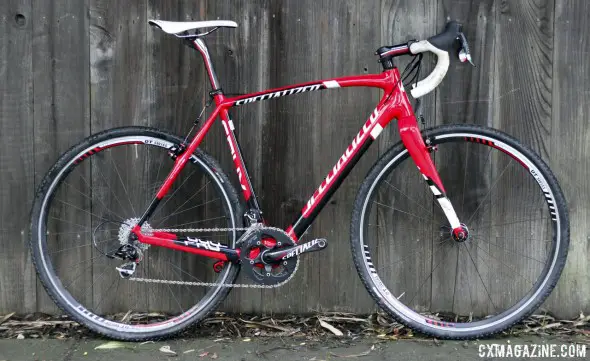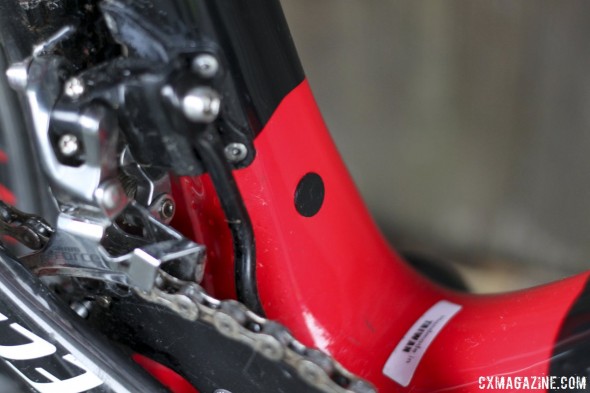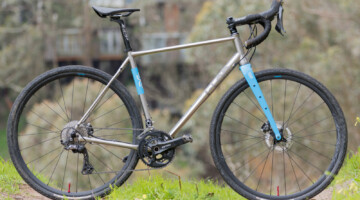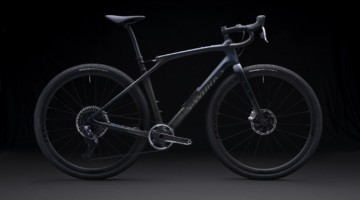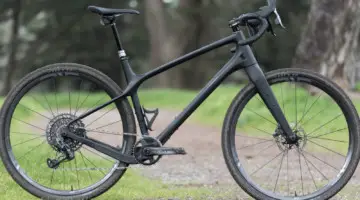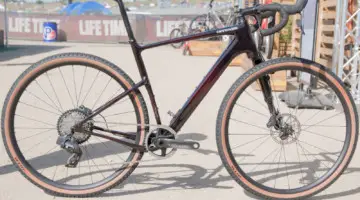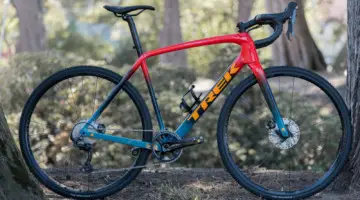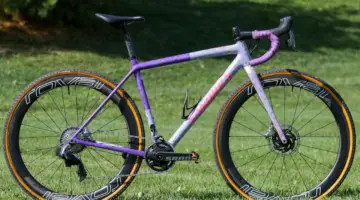Our late 2012 issue of Cyclocross Magazine, Issue 19, boasted more bike reviews than we’ve ever had before. Among these was the Specialized Crux. Check out its vital stats here, and make sure you pick up a copy of Issue 19 to see what we had to say about it!
A few tidbits from the review by Andrew Yee:
Specialized had some high-profile cyclocross racers to help it develop and refine its cyclocross bikes, from two-time World Champ Zdenek Stybar, and former National Champions Todd Wells, Ned Overend, and Cody Kaiser. While racers have been testing aluminum Crux machines for the last two seasons, Specialized waited until 2012 to settle on a final design, geometry and lay-up for a carbon production version of their race-oriented cyclocross bike.
The Crux line represents Specialized’s third offering to the cyclocross market, after the company’s M4 metal matrix frame, followed by the versatile Tricross line. The national championship-winning Tricross line still continues, but is now focusing more on dirt-road riders and commuters, while the Crux focuses on the avid cyclocross racer. In Issue 11, we fell in love with the neon aluminum Crux Comp, especially because of its racy geometry, versatile gearing and good tires, and two years later, the Crux is now finally available in carbon (not counting the rebadged carbon Tricross offered these last two years).
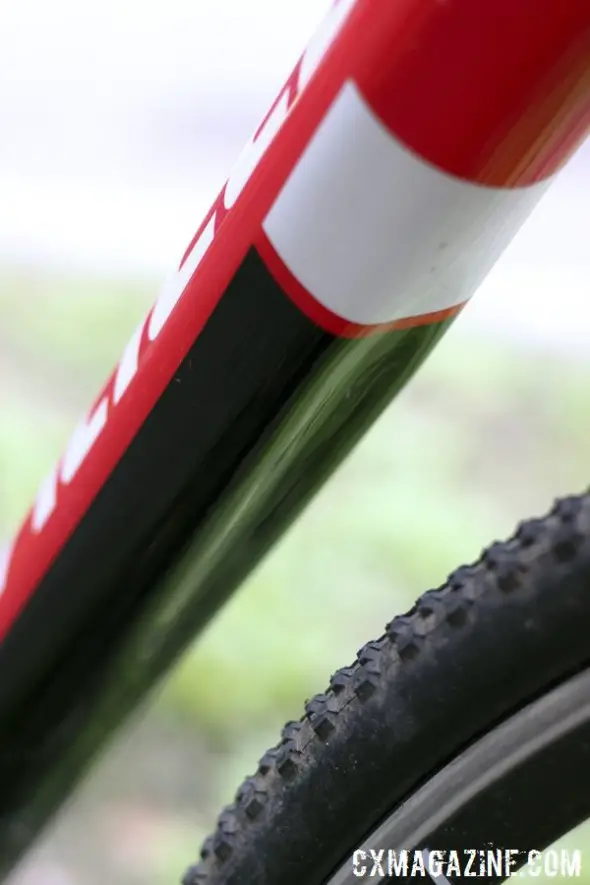
The Love Handle down tube grip is surprisingly useful when shouldering the 2013 Specialized Crux Pro cyclocross bike. © Cyclocross Magazine
Specialized’s Andrew Frasca was hired by Specialized in part to develop its new cyclocross line, and his background running October Bicycles in New England has given him plenty of familiarity with the needs and quirks of cyclocross racers. The aluminum Crux came first, and then the 2013 carbon models, and while many Specialized fans lamented the longer-than-expected wait for a carbon model, there are major benefits to being a bit late to the game: learning from other designs, aggregating some of the best features of other bikes, and accommodating the latest technological trends in cyclocross equipment, like disc brakes, electronic drivetrains, and internal cabling.
The result? A very light (around 1000g) carbon frame, with internal cabling and Di2-wiring ports that boasts generous tire clearance, front and rear (without any horizontal shelf behind the bottom bracket, similar to Stevens, Fuji and Redline). Specialized actually brings four new carbon cyclocross frames to market this year, in the form of both disc brake and cantilever brake-equipped Crux Pro and S-Works frames. The S-Works frames come only as framesets and gain a higher grade of carbon, and shave around 100 to 150 grams, depending on the size. Surprisingly, the disc models are actually a bit lighter than the canti models, due to the amount of material needed to reinforce the seatstays by the cantilever brake mounts. Andrew Frasca does point out, though, that the difference is just a handful of grams.
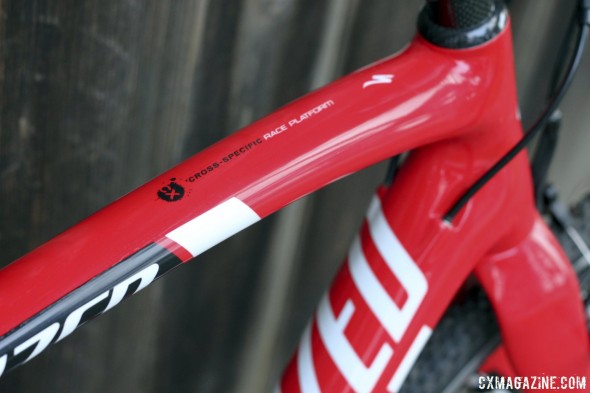
Flattened, shaped carbon tubes and internal cabling on the 2013 Specialized Crux Pro cyclocross bike. © Cyclocross Magazine
The Crux is designed with the foresight to accommodate emerging technology, including electronic shift wires and hydraulic disc brake lines. The internal rear brake cable routing will handle hydraulic lines, but will require a rubber grommet to hold the line in place. “When the brakes are ready, we’ll be ready,” says Frasca.
Not all the money in a $4400 ’cross bike goes to the carbon frame, and the Crux Pro we rode is race-ready with a full SRAM Red 2011 drivetrain. The only exception in the line-up is the front derailleur, but we think it’s a wise choice to go with the relatively sturdier Force front derailleur instead of the paper-thin titanium cage Red. Although there is an updated 2012 Red group with Yaw front shifting, Specialized opted for the still-available 2011 build to help hit a lower price-point. Avid Shorty Ultimate cantilever brakes keep the stopping power in the SRAM family, but the rest of the components sit on Specialized’s side of the aisle. Stem (Pro-set), bars (CX), saddle (Body Geometry Phenom Comp), seatpost and cranks (Pro FACT carbon) all bear the iconic ‘S’, as do the Tracer Pro 33c tires that grace the DT Axis 3.0 wheels.
Specialized might seem a little late to the game with this update on its carbon cyclocross frame, but they put that time to good use to make sure their feature set and design would be top notch. But how does the carbon Crux Pro frame measure up against the aluminum model and compare to other bikes we’ve ridden? Check out a digital copy of Issue 19 for instant access to the full, in-depth review.
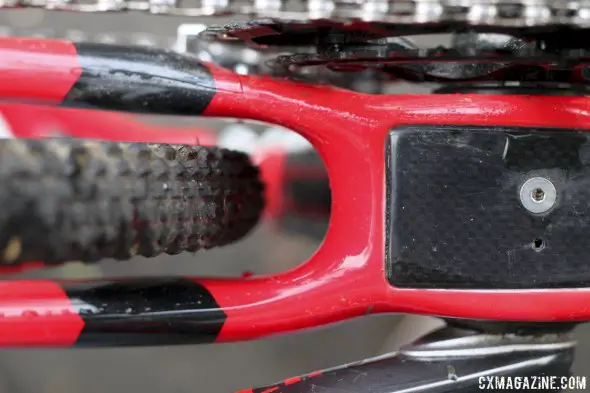
Plenty of mud clearance at the chainstays on the 2013 Specialized Crux Pro cyclocross bike. © Cyclocross Magazine
Also, view past Specialized cyclocross bikes and see how they measure up in specs to other bikes and be sure to check out all the ’cross bikes in our cyclocross bike directory.
Frame: FACT 10r carbon
Fork: FACT carbon canti
Drivetrain: 2011 SRAM Red
Crankset: Specialized Pro FACT carbon
Brakeset: Avid Shorty Ultimate
Wheelset: DT Axis 3.0
Tires: Specialized Tracer Pro 33c
Handlebar/Stem: Specialized Pro-set/CX
Seatpost: Specialized Pro FACT carbon
Weight: 17.29 lbs w/o pedals, 10.59 w/o wheels
Country of Origin: Taiwan
More info: www.specialized.com
Want to read the full review? To see what our testers thought about after putting it through some muddy races, check out Issue 19 of our print mag. Make sure you’re subscribed to Cyclocross Magazine (subscribe digitally to receive Issue 19 for instant delivery, or order it in the archive section of our subscription page).
Check our Issue 19 page for the full Table of Contents to see what else is in store, and stay tuned for more sneak peeks!













